Garden State Ramble, part II 12 March 2009
When driving long distances, whether on the interstate or a country highway, any number of things will make the experience more pleasant: a well-placed cup holder, a working gas gauge, a decent radio station, clear directions, good weather, etc. But of all the things that shape the driving experience, as drivers, we rarely give much thought to one of the most important: the efficient highway junction.
The basic morphology of junctions is pretty straightforward. At grade roads intersect with each other at the surface level (either at 90 degrees or in a roundabout). Traversing an intersection in the face of opposing at grade traffic requires good will and faith even when signage and signals are present. In grade separations, one road remains on the surface and the other is raised to a different height level. This improves traffic flow and speed by allowing opposing traffic streams to cross without contact. The problem with simple grade separation is the lack of access to the intersecting road.
Enter the interchange, which combines the traffic flow advantages of grade separation with the convenience of at grade entrance and egress.
The other day we got in the car and drove off in search of the origins of the interchange, traversing far too many at grade junctions while leaving Manhattan. Our destination was the town of Woodbridge, better known as Exit 11 on the New Jersey Turnpike. Settled in the 17th century, Woodbridge was home to a thriving brick industry well into the 20th century. Lots of towns in Middlesex County can boast about their bricks, only Woodbridge has the world’s first “safety engineered superhighway intersection” and that’s where we were headed.
.
.
.
.
.
.
In 1916 a Maryland engineer named Arthur Hale patented a “street crossing” design in the shape of a cloverleaf. In essence it was a grade separation augmented by four circular loops that allowed drivers to connect to the overpass and underpass in both directions, on both roads. This is pretty close to what got built at Woodbridge, for the first time ever, in 1929.
Designed by Edward Delano of the Philadelphia contracting firm of Delano & Rudolph, the Woodbridge Cloverleaf connected two of the most important highways in pre-turnpike New Jersey: Route 25 (now U.S. 1 & 9) from Jersey City to Camden, and Route 4 (now N.J. 35) from New York City to the Jersey Shore. Though these may look like quiet country highways in period photographs, they weren’t. By the late 1920s traffic in New Jersey was already considerably more congested than elsewhere in the U.S. and these roads were major thru-routes between New York and Philadelphia. Today, they carry more local traffic than they did eighty years ago but they remain as congested as ever because of the rapid development of Woodbridge and the surrounding townships.
Driving south on the 1 & 9 from Jersey City we passed several drive-thru car washes with long lines of people waiting, I can only assume, to wash their cars. This seemed like a mystery: I’ve been known to wait on extremely long lines for pizza and even hotdogs, but a car wash? Clearly, this was an essential part of car culture that I had somehow overlooked. In the interest of thorough field work, I added “car wash” to my list of things to do on the road trip.
Having passed on the car wash opportunity, we continued into Woodbridge and were on top of the cloverleaf before we knew it. No worries–without even braking, an easy left exit, a gradual downgrade, and a smooth turn in the vicinity of 270º took us from the 1 & 9 down to route 35. We swung under the overpass and pulled off the road to have a look.
If your map is a few years old, or if your mapping software hasn’t updated its data, what you see when you look at this historic junction is a cloverleaf. Alas, the reality on the ground is somewhat different: an “improvement” project in 2004 enlarged two of the petals. While this may have eased congestion, it distorted the simple, balanced elegance of the original form.
This distortion of a significant landmark in the history of the American highway makes the Cloverleaf Cemetery across the street all the more poignant, marking the site where “our national flower,” as Lewis Mumford disparagingly called the concrete cloverleaf, first took root.
A final note: the same NJDOT project also destroyed the charm of the the 1937 bridge that spanned the 1 & 9 at the cloverleaf. Designed by engineer S.A. Snook and architect A.I. Lichtenberg of the NJ Department of Transportation, it was a single span steel bridge with concrete piers and balusters. Like George Dunkelberger’s bridges on Merritt Parkway in Connecticut, the bridge at the cloverleaf had detailing and styling (art deco in tile and cast aluminum) that was taken for granted in an era when the aesthetics of infrastructure were understood to be just as important as function. The ARRA-funded shovel ready projects of 2009 would do well to bear this in mind.
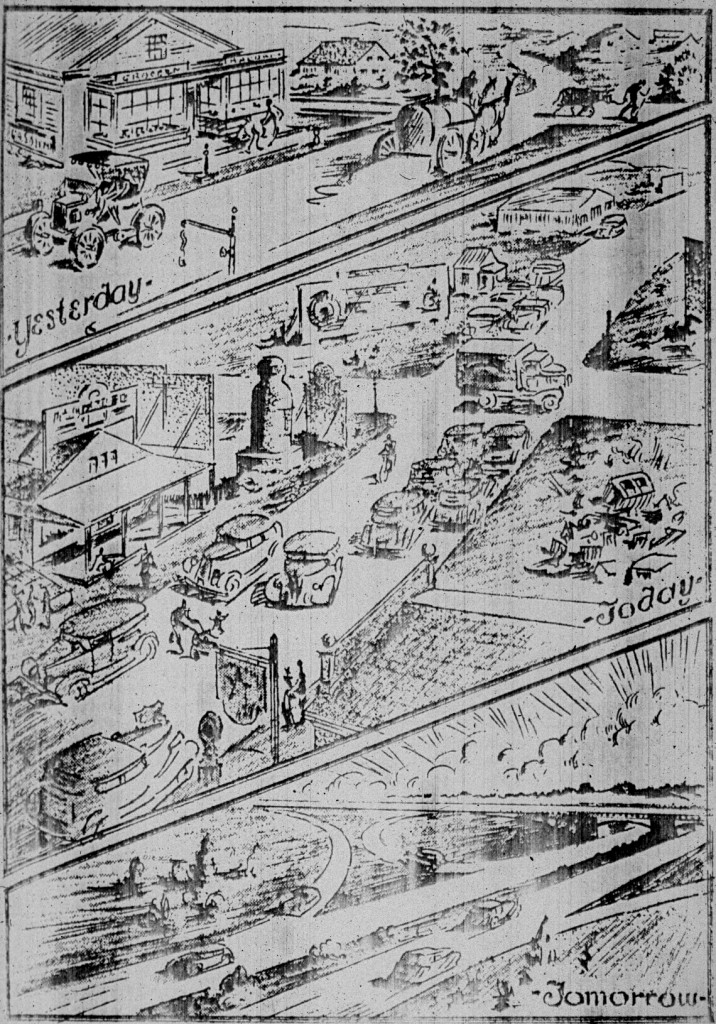
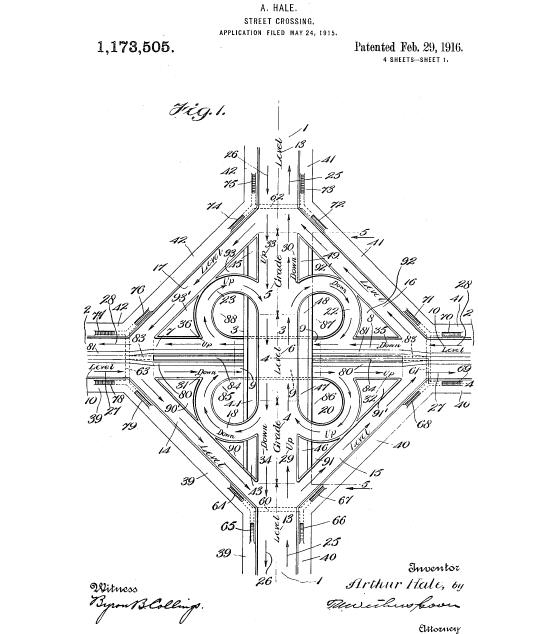
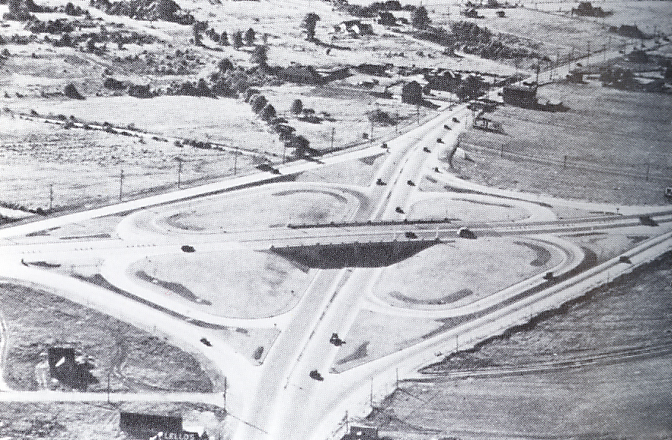
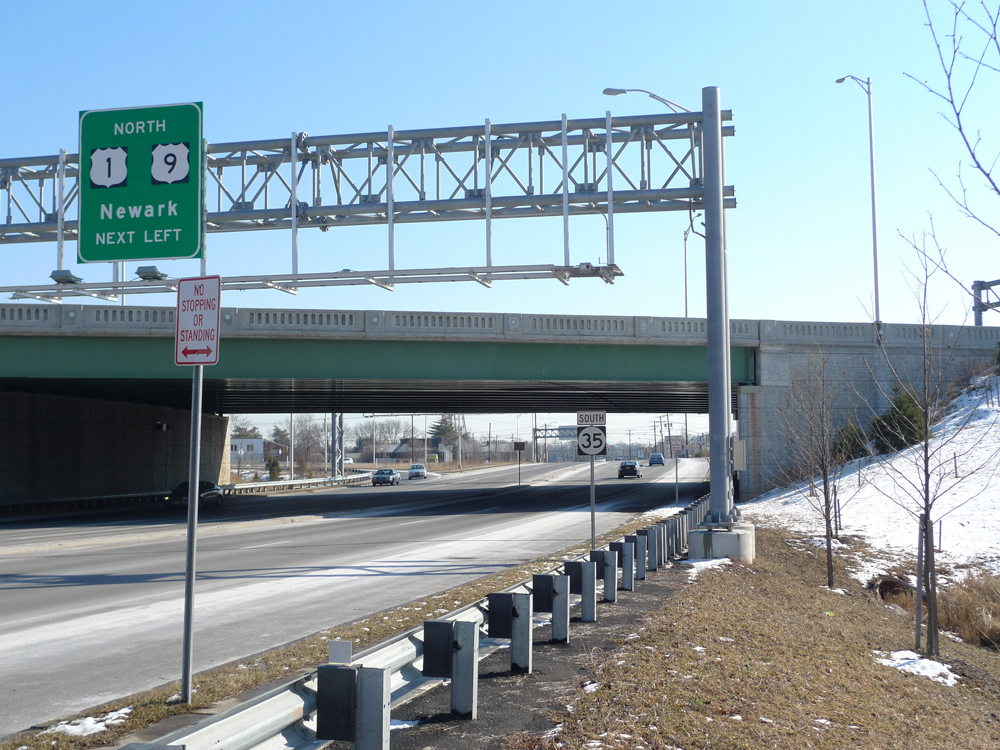
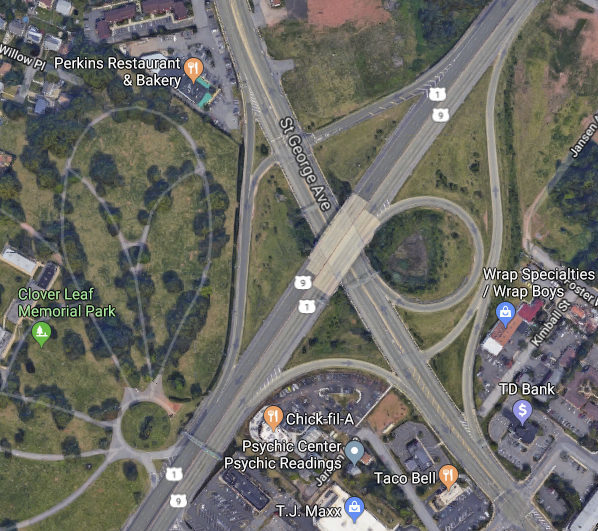

This is a great coincidence, I am currently reading Travels With Charley. Steinbeck writes about how when he is on the interstate every state is the same to him, a large truck in his view forward and a firebird in his rearview mirror. Do you have plans to take mainly local roads so that you can experience more of the country as a whole or is this trip more planned out with specific destinations and the shortest route in between?
As for the last post, did you go on the Northern Pedestrian path of the bridge or did you just try the southern path? I was planning on crossing by foot next weekend. (I’m currently on a bridge crossing kick) Good Luck heading out today!
fabulous site.
as you move down the coast i’ll suggest stops, eats, sights along the way, best as i can remember your route.
are you taking the lee hwy? north carolina or virginia to tenn?
across tenn on i-40? don’t miss bucksnort between nashville + memphis. in memphis the rendezvous for ribs, the poor + hungry for burgers (if it’s still there) + give a kiss to wanda the proprietress…
call when you hit red lick ms down hwy 61 (just down the road a piece from red bone) + we’ll reconnoiter.
keep rollin’
xo binx aka jkd